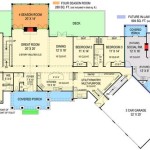Moving House Plan
Relocating to a new home represents a significant life event, often accompanied by a mixture of excitement and stress. A comprehensive moving house plan is essential for mitigating potential challenges and ensuring a smooth transition. This plan serves as a roadmap, outlining the necessary steps and timelines involved in the entire moving process.
The initial phase of a moving house plan involves establishing a realistic budget. Moving costs can quickly accumulate, encompassing expenses such as packing supplies, transportation, professional movers (if applicable), and potential storage fees. Creating a detailed budget helps individuals track expenses and avoid unforeseen financial strain. This budget should include a contingency fund for unexpected costs that may arise during the move.
Once a budget is established, creating an inventory of belongings is crucial. This inventory serves multiple purposes. It provides a comprehensive record of possessions for insurance purposes and aids in determining the volume of items requiring packing and transportation. The inventory can be categorized by room or item type for enhanced organization. Furthermore, this process presents an opportunity to declutter, discarding or donating unwanted items to reduce the overall moving load.
Selecting a moving date and booking professional movers, if required, constitutes the next critical step. Choosing a date well in advance allows ample time for planning and preparation. If professional movers are necessary, obtaining quotes from multiple reputable companies is recommended. Comparing quotes based on services offered, insurance coverage, and customer reviews helps individuals make informed decisions. Booking movers well in advance, especially during peak moving seasons, is essential to secure desired dates and avoid potential delays.
Packing represents a significant undertaking in the moving process. Gathering necessary packing supplies, including boxes, packing tape, bubble wrap, and markers, should be done in a timely manner. Packing systematically, room by room, and labeling boxes clearly with their contents and destination room simplifies unpacking at the new residence. Fragile items require extra care and protective packaging to minimize the risk of damage during transit.
Addressing change of address notifications is an essential administrative task. Notifying relevant institutions, such as banks, post offices, and subscription services, of the new address ensures uninterrupted mail and service delivery. Updating driver's licenses and vehicle registrations is also crucial for legal compliance. Creating a checklist of institutions to notify can help ensure this task is completed thoroughly.
Arranging for utility connections at the new residence is vital for a comfortable transition. Contacting utility providers for electricity, gas, water, and internet services well in advance of the moving date ensures these services are activated upon arrival. Scheduling connection appointments for the day of or shortly after the move minimizes any inconvenience.
Confirming moving arrangements a few days before the scheduled move date is a prudent practice. Reaffirming the booking with professional movers, if utilized, and verifying all necessary packing supplies are readily available helps avoid last-minute complications. This final check provides an opportunity to address any outstanding questions or concerns.
On moving day, supervising the loading and unloading process is essential, especially when utilizing professional movers. Ensuring items are handled with care and loaded onto the moving truck efficiently helps minimize potential damage and delays. Checking off items against the inventory list as they are loaded and unloaded provides an additional layer of organization and accountability.
Upon arrival at the new residence, directing the placement of furniture and boxes in their designated rooms streamlines the unpacking process. Having a clear plan for furniture arrangement beforehand helps expedite the settling-in process. Unpacking essential items first, such as bedding, toiletries, and kitchen essentials, allows for a more comfortable initial stay.
Taking inventory of delivered items and noting any damages is crucial for insurance purposes. Reporting any damages or missing items to the moving company promptly initiates the claims process, if necessary. Keeping all relevant documentation, including the inventory list and moving contract, organized and accessible facilitates this process.
Familiarizing oneself with the new neighborhood is an important aspect of settling in. Locating essential amenities, such as grocery stores, pharmacies, and medical facilities, provides a sense of comfort and convenience. Exploring local parks and recreational areas enhances familiarity with the surroundings and contributes to a smoother transition into the new community.
A well-structured moving house plan significantly reduces the stress associated with relocation. By addressing key aspects of the move in a systematic and organized manner, individuals can ensure a smoother and more efficient transition to their new home. Careful planning and preparation contribute to a positive moving experience.

Free Moving House Checklist 2024 Home Zoom

12 Moving House Tips For A Stress Free Move Grillo Designs

Detailed Moving Checklist Printable For Excel

Moving House Checklist Smoothly

New Home Purchase Moving Checklist

Free Printable Moving Checklist Personalized Cards House

The Moving Checklist Budget Tips

Checklist Planning Your Move Moving Tips Help

How To Plan A Big Move Free Printable Moving Checklist Organisation

House Moving Checklist Excel Template List Change Of Address Cards








